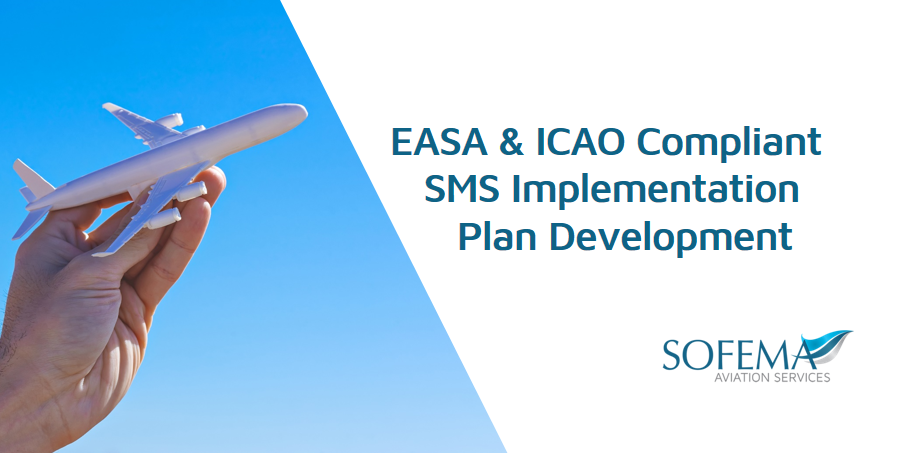Sofema Aviation Services (SAS) www.sassofia.com considers key aspects of an effective Aviation Safety Management System (SMS) Implementation Plan.
Introduction
The SMS implementation plan should be developed in consultation with the Accountable Executive and the Leadership Team, together with managers responsible for the delivery of products and services related to, or in support of, the safe operation of aircraft.
Once completed, the Accountable Executive endorses the plan.
The SMS implementation plan shall
- Include timelines and milestones consistent with the requirements identified in the gap analysis process, the size of the service provider, and the complexity of its products or services.
- The plan should address coordination with external organizations or contractors where applicable.
- The implementation plan may be documented in different forms, varying from a simple spreadsheet or specialized project management software.
- The implementation plan should address gaps, through the completion of specific actions and the completion of milestones according to the stated timeline.
Assignment of each task assures accountability throughout the implementation process.
See the following available on SAS Download Library Area
Guidance on SMS Gap Analysis and Implementation Plan
An SMS defines measurable performance outcomes to determine whether the system is truly operating in accordance with design expectations and not simply meeting regulatory requirements.
The safety performance indicators are used to monitor known safety risks, detect emerging safety risks, and to determine any necessary corrective actions.
The plan should be reviewed regularly and updated as necessary
Safety performance indicators also provide objective evidence for the regulator to assess the effectiveness of the service providers‘ SMS and to monitor the achievement of its safety objectives.
The service provider‘s safety performance indicators should consider factors such as the organization‘s safety risk tolerance, the cost/ benefits of implementing improvements to the system, regulatory requirements, and public expectations.
Safety performance indicators are supplementary to any legal, or regulatory requirements and do not relieve service providers from their regulatory obligations.
In practice, the safety performance of an SMS is expressed by safety performance indicators and their corresponding alert and target values.
The service provider should monitor current indicators‘ performance in the context of historical trends to identify any abnormal changes in safety performance.
Note – Target and alert settings should take into consideration recent historical performance for a given indicator.
Desired improvement targets should be realistic and achievable for the service provider and the associated aviation sector.
Establishing an alert level for a safety indicator is pertinent from a risk monitoring perspective.
This will ensure that high consequence outcomes (e.g. accidents and serious incidents), as well as lower consequence events (e.g. incidents, non-conformance reports, deviations), are addressed.
Next Steps
Follow this link to our Library to find & Download related documents for Free.
Sofema Aviation Services (www.sassofia.com) and Sofema Online (www.sofemaonline.com) offer more than 75 Safety Management System Training courses – For details please see our websites or email team@sassofia.com
Tags:
Aviation Quality & Safety Management Symposium, aviation safety, Aviation Safety Management System, EASA, ICAO, SMS, SMS Development, sms implementation




